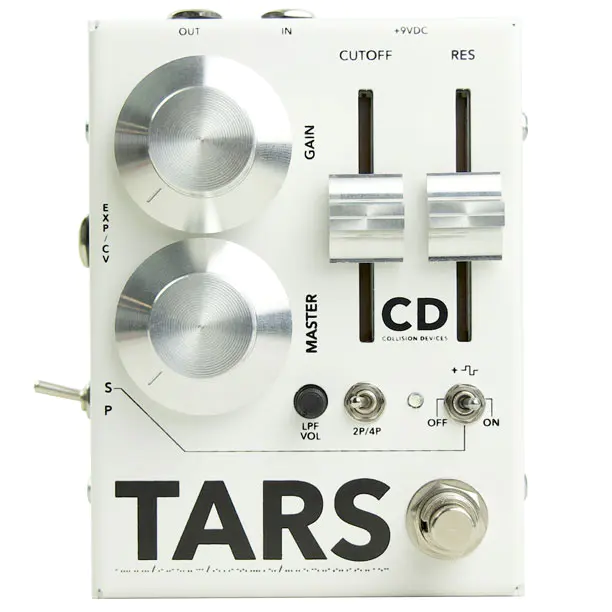
The Collision Devices TARS is the first standalone fuzz pedal by a French company best known for their ambient and organic multi-effect pedals such as the Black Hole Symmetry and the Nocturnal.
However, this fuzz is not just a fuzz, but rather a very tweakable square wave generator interacting with “subtractive synthesis,” i.e. a filter. But this doesn’t mean that this is just a synth pedal: the interaction between the filter and the fuzz can produce some very musical and warm fuzz tones when the former is used more subtly, while more extreme settings will produce more classic synth-like tones and also oscillating madness.
The fuzz circuit, mostly borrowed from the one found on the Black Hole Symmetry, can be controlled via the two giant knobs for Master and Gain, and is joined by an analog, synth-style resonant filter inspired by the Korg MS-20 whose cutoff and resonance can be controlled via the two faders on the right.
The two effects can work either in parallel or in series, a mode that can be set through the toggle switch on the left panel. In S (series) mode, the fuzz feeds the filter. in P (parallel) mode, the two effects are both routed to the output, and the LPF Volume knob sets the level of the filter side.
The toggle switch on the far right only works in Series mode and adds another fuzz AFTER the filter, reintroducing some harmonics for a brighter tone., while the 2p/4p toggle switch modifies the curve of the filter’s cutoff in a more or less steep way.
To grant full compatibility with Eurorack system and other devices adopting the CV format, the TARS features an Expression Input that also doubles as a CV In.
Collision Devices TARS, Builder’s Notes
TARS is a fuzz/filter pedal. It’s a robot looking for life in space too. But that’s a long story we’ll tell you in the user manual.
It comes in a 1.5mm aluminium enclosure with aluminium knobs and faders. All custom and locally made.
The fuzz part is inspired by the Black Hole Symmetry fuzz section.
Put it through the MS-20 style filter to create fuzzy-noisy textures.
Cut through the mix with the different filter possibilites or sweep between the frequencies to create huge waves of noise.






















